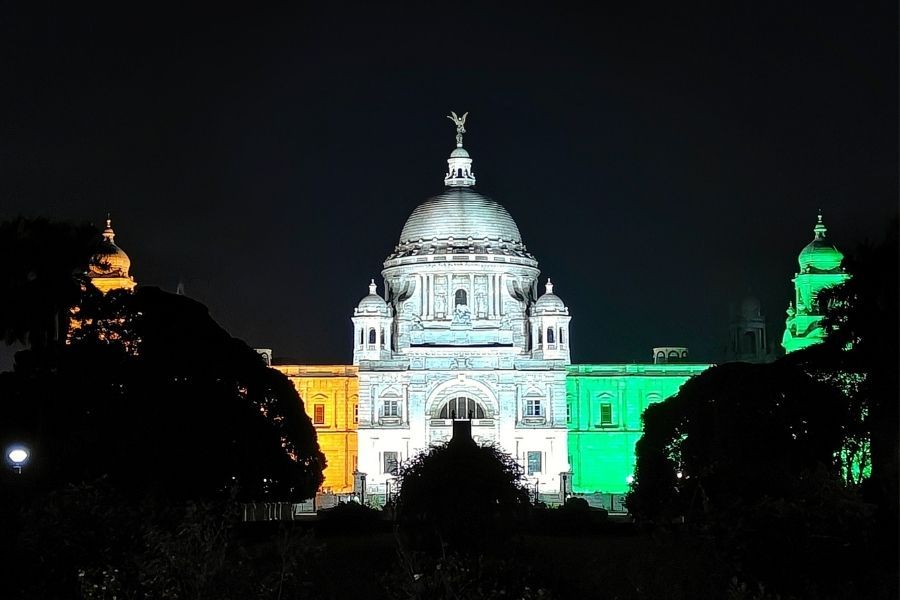Octogenarian Kolkata woman Tandra Bhatta has faint memories of the first Independence Day. But the one thing she vividly remembers is the morning scene at her colony.
“After flag hoisting in the morning, we got jilipi and shingara on shaal pata. All the kids in the para gathered in white clothes. The womenfolk would blow the shaankh (conch) as part of celebration,” recalled the 82-year-old Manicktala resident.
“That shankha-naad was ethereal.”
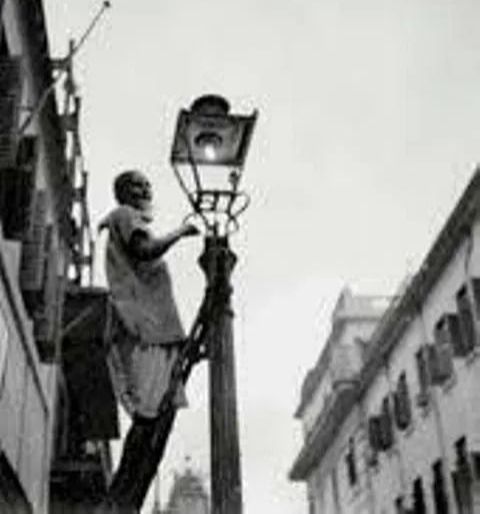
Gas-Bati/Gas street lamps (The Telegraph India archives)
Electricity hadn't reached many Kolkata neighbourhoods back then. “Manicktala, for example, didn’t have fancy street lights.”
“But on Independence Day, the whole para was lit with gas lamps… we used to call it gas er aalo. The uncles were teary-eyed on the night,” Bhatta said.
Attendance at school flag hoisting was compulsory, but the day belonged as much to the neighbourhood as to the institutions.
The 1950s
By the 1950s, the city had begun formalising its celebrations.
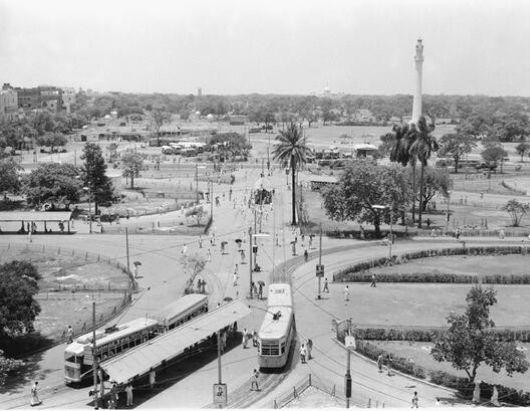
Esplanade Square (Dharmatala) in the 1950s (X/@IndiaHistoryPics)
Roma Bhattacharjee, 78, a retired school headmistress, remembers “simple one-mile parades in the para” and school programmes where teachers told them about “shadhinota (independence)”.
It was also a decade defined by upheaval. The city was still absorbing waves of refugees from East Pakistan, which is now Bangladesh.
“Independence Day was joyful, but there was always an undertone of loss,” recalled Bhattacharjee.
Sweets were still central to the day, as were sports events in the para.
The 1960s
For Madhumita Basu, born in 1962, school flag hoisting was an event of “huge” importance.
“Mothers in the para would have a potluck. Every house made something special.”
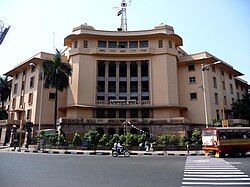
All India Radio-Akashbani Bhavan Kolkata (Sourced from X)
“We didn’t have TV, but we had the radio and the elders in the family somewhat forced us to listen to the prime minister's Independence day speech on the radio and then the eldest person in the para would speak at the club about the day's importance. We also sang swadesh porajye (patriotic) Rabindra Sangeet.”
“Radio had made its way to most Kolkata households in the ’60s. We would listen to Vande Mataram and other patriotic songs which also became part of our 15th August,” added Basu.
Independence Day merchandising like tricolour badges, caps, wristbands was still decades away.
“We wore laal paar shada saree (white saree with red border). It was never ever about display,” Basu said.
The 1970s
For those who came of age in the 1970s, Independence Day celebrations were tied to regional art and music. “We sang gono-shongeet,” recalled Swarachita Mallick, born in 1967.
The Bangladesh Liberation War was at its peak. Though children didn’t know much about it, the music stayed with them.
School attendance was non-negotiable, thanks to the lure of a “rare” dessert.
“We got ice cream on Independence Day in school. It wasn’t common then, so no one skipped it.”
Television had yet to become commonplace, so the day unfolded entirely in schools and neighbourhoods.
The 1980s
The 1980s was when Doordarshan became a part of daily life, but the core of Independence Day remained local.
“Preparations for the march past started a month earlier,” said Suman Chakraborty, born in 1982. “We used to get food packets with luchi-aloor dom, and in the evenings, we played housie with family. We woke up at 7am for school…it was extremely ritualistic actually.”
“You see, anticipation built over weeks for a single day’s show,” Chakraborty told My Kolkata.
The 1990s
The liberalisation era brought cable TV and consumer goods, but in many paras of Kolkata, Independence Day celebrations were more about participation than spectatorship.
“We had cultural programmes, but sports competitions were the highlight,” recalled Abira Deb Kundu, born in 1990.
Now a entrepreneur and a new mother, she sees Independence Day as more than nostalgia.
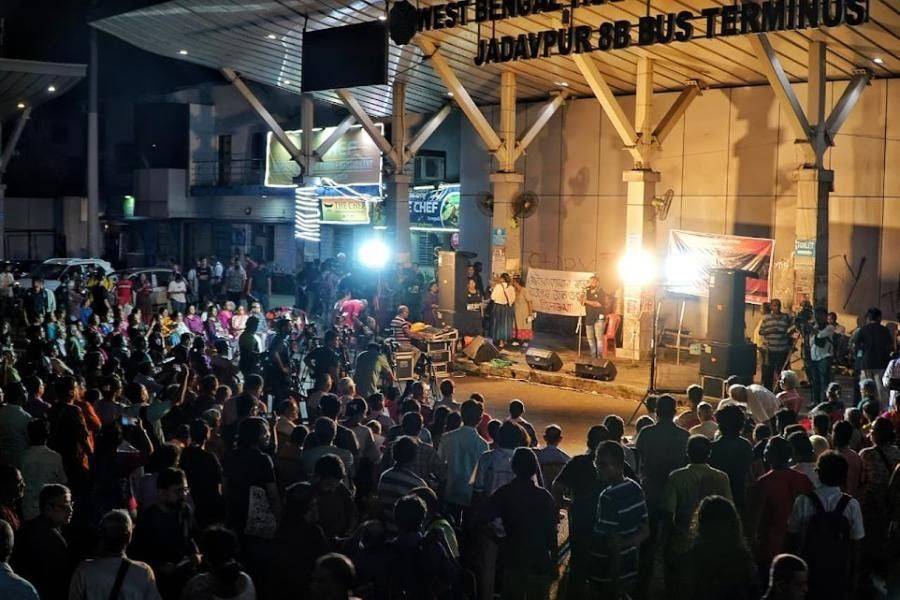
People gathered at Jadavpur 8B bus stand on the night of August 14, to mark one year of the 'Reclaim the Night' movement (Pic: Soumyajit Dey)
“It shouldn’t be only about hoisting flags and eating sweets. With so many cases of harassment, rape, and abuse in the news, I want my child to understand that independence is also about empathy.”
“As he grows, I’ll tell him the old stories of my childhood, sure, but I’ll also teach him that August 15 is a day to renew your promise to be a responsible citizen,” she added.
The 2010s
For ten-year-old Kabir Bhan, born in 2015, Independence Day is part history lesson, part performance.
“I present a speech every year. This time, I’ll talk about the brave Indian Army and the Pahalgam attack. I will also share digital stickers with my friends”
Kabir wears a white kurta and attends the apartment flag hoisting.
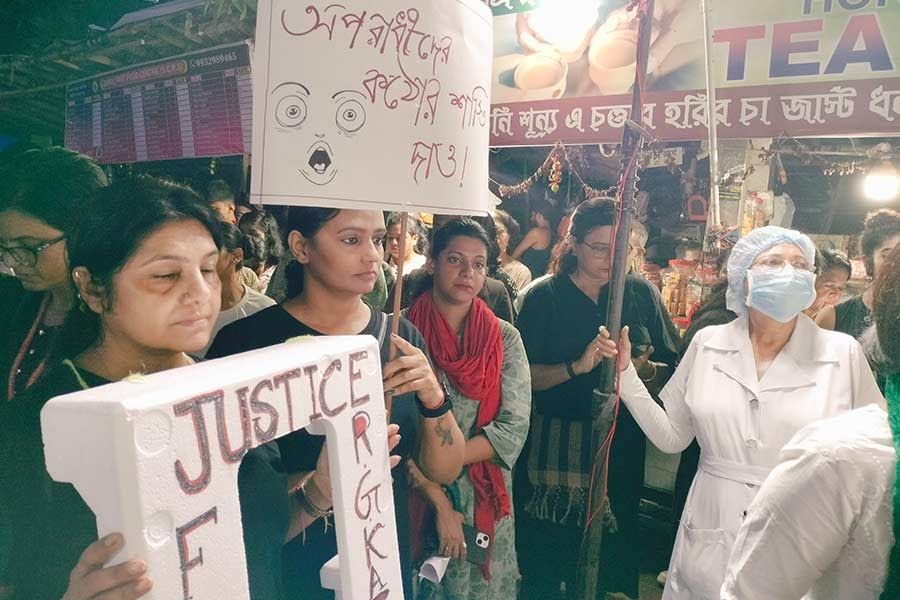
Protest demonstrations at Academy of Fine Arts, 2024(The Telegraph file pic)
“Last year, on the eve of Independence day, I joined the Reclaim the Night movement. My parents say you should always be vocal against injustice,” he said.
Over the past eight decades, the form of celebrations changed. Gas lamps gave way to electric bulbs and tricolour LEDs. And radio was replaced first by TV and then by YouTube.
Yet in every decade, Kolkata’s Independence Day has been about gathering.
Perhaps the most enduring tradition is not the parade or the sweets, but the act of telling the next generation what the day means. Because without these stories, August 15 risks becoming just another day off.
